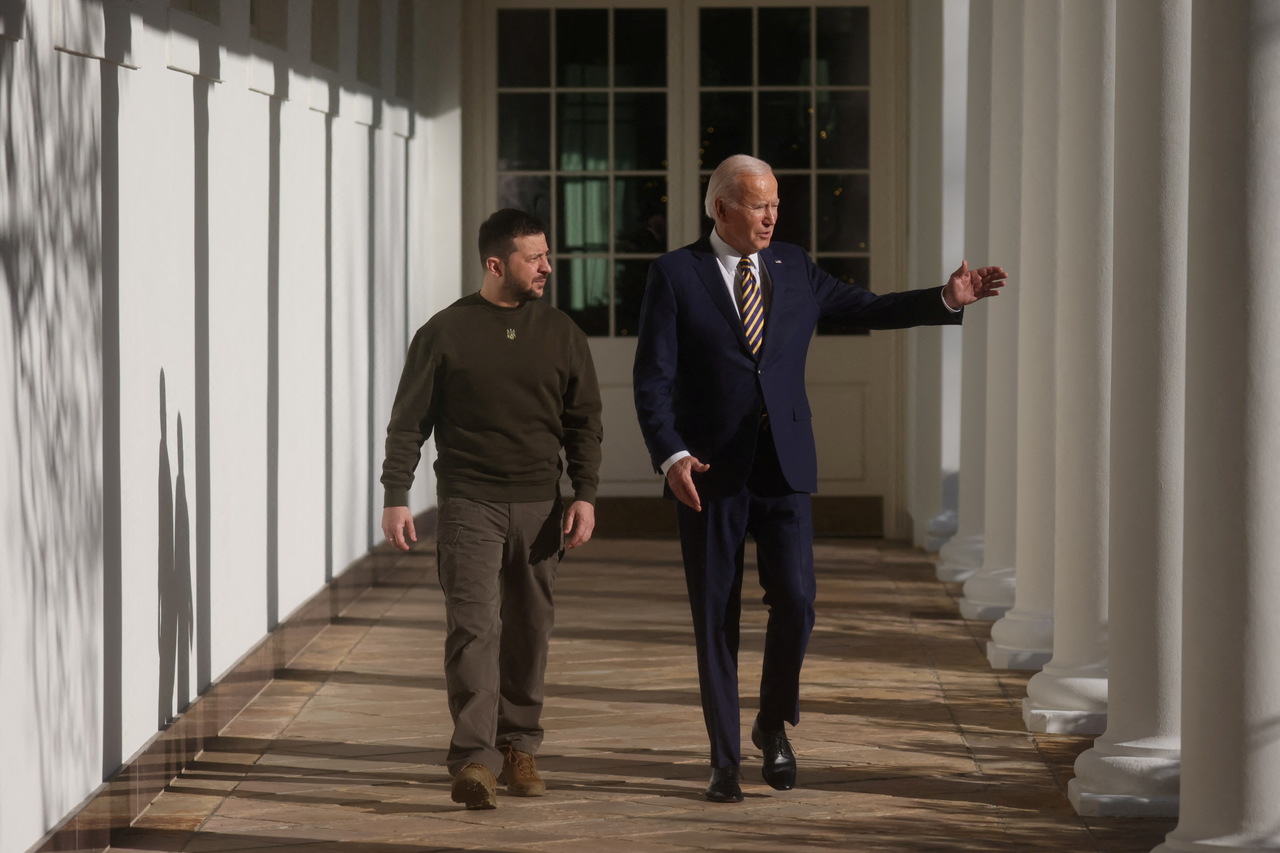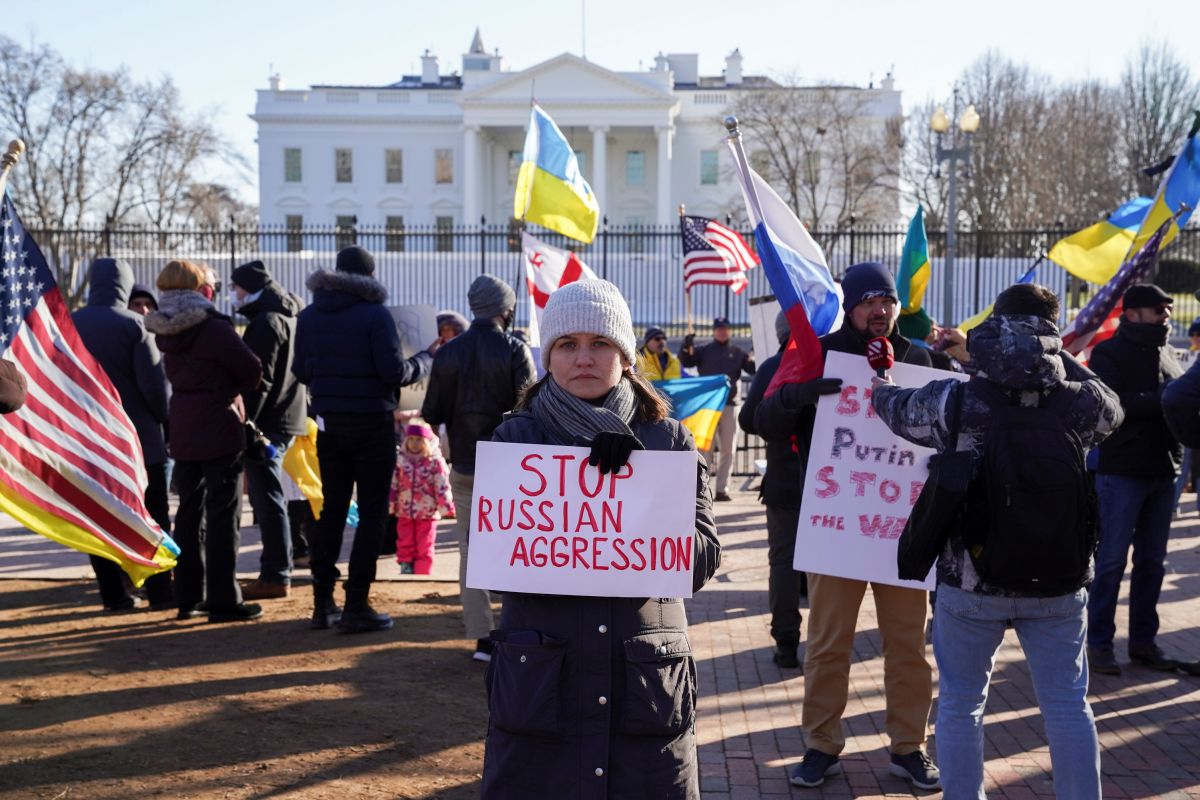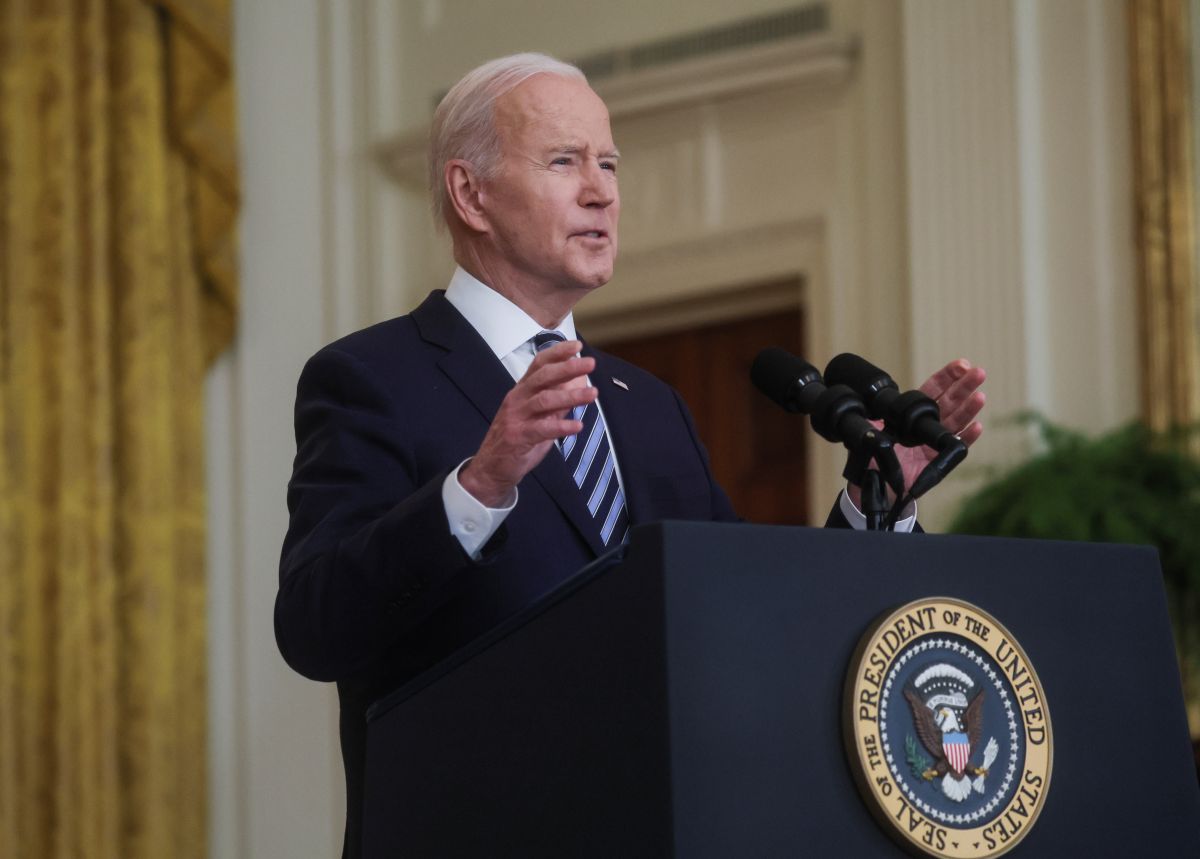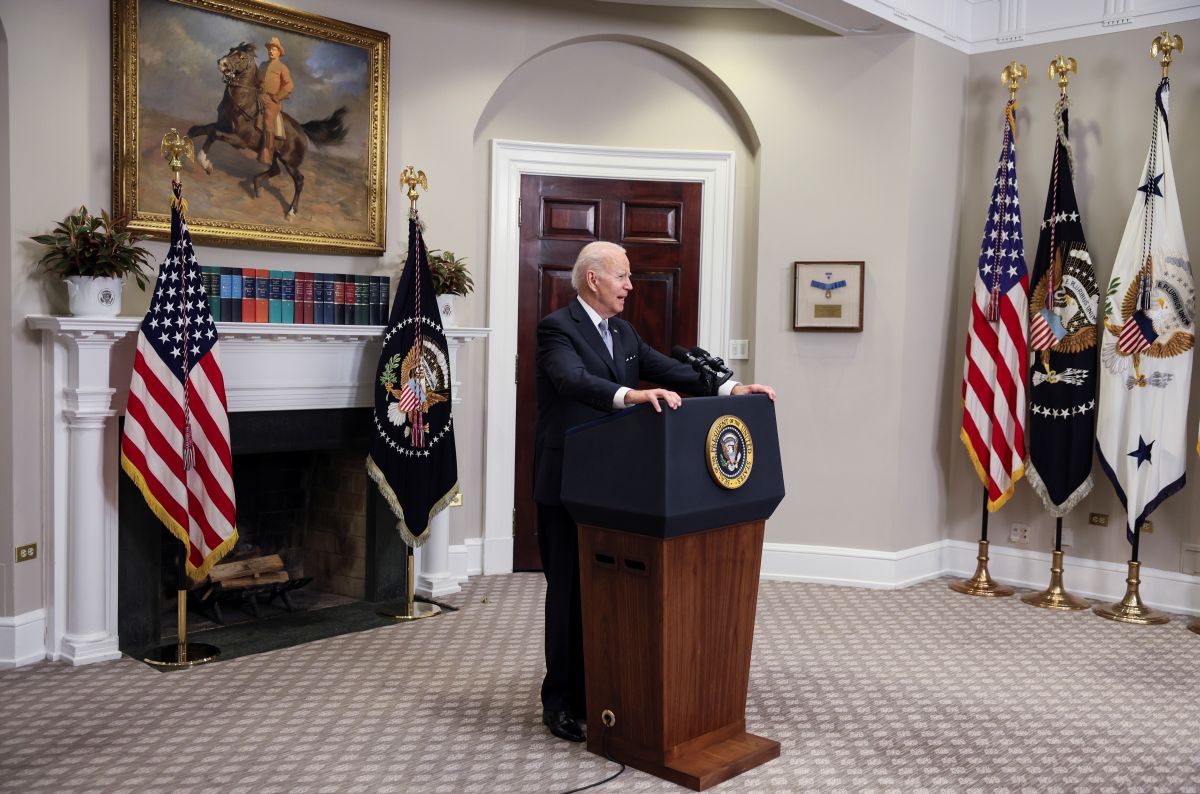Zelensky Visits the U.S. to Rally Support
On 21 December, the President of Ukraine Volodymyr Zelensky paid a visit to Washington. It was his first foreign visit since the start of the Russian invasion in February. Zelensky met with U.S. President Joe Biden and addressed a joint meeting of the U.S. Congress, which was symbolic in the international dimension and for U.S. domestic policy. The meeting of the presidents and the military support package announced on the occasion prove that the U.S. is Ukraine’s key political and military ally, and the goal of the U.S. is long-term support for Ukraine in its defence against Russia.
 LEAH MILLIS / Reuters / Forum
LEAH MILLIS / Reuters / Forum
What was the goal of Zelensky’s visit to the U.S.?
Zelensky’s appearance in Washington was intended to help Ukraine obtain confirmation that the main goal of American policy is long-term military assistance and Russia’s “strategic defeat”. For Biden, it was primarily an attempt to shore up bipartisan support for Ukraine after the Republican Party takes control of the House of Representatives in January. Zelensky repeatedly emphasised during his visit that the fight against Russian aggression is the defence of broader international security based on the norms of law, incorporating support for Ukraine into the implementation of U.S. global goals. The administration will find it easier to criticise Republicans who oppose further aid, portraying them as a threat to American interests. The visit was also an opportunity in the difficult winter period of the war to send a strategic signal to Russia, as well as to European allies, that there will be no consent to peace talks with Russia without Ukraine’s readiness to undertake them. That message should help to weaken the propaganda overtones of the meeting between the leaders of Russia and Belarus (Vladimir Putin and Alexander Lukashenka) in Minsk on 19 December.
What is the importance of the address to the joint session of the U.S Congress?
Zelensky’s speech was important in the context of the U.S. legislative process, which also concerns aid measures for Ukraine. The U.S. Congress must adopt the federal budget for fiscal year 2023 by 23 December. Biden has asked Congress for another $38 billion to be spent on military, economic, and humanitarian aid to Ukraine. Congress increased this amount to $45 billion, but it was included in the bill for the next budget, totalling $1.7 trillion. Due to inter-party disputes, the adoption of the bill is not a foregone conclusion, so it may be postponed by a so-called continuing resolution (CR). The Senate has already passed the budget along with a CR extending the deadline to 30 December, allowing more time for post-vote formalities and the president to sign the bill. However, if no decision on the CR is made in the House of Representatives, the result will be a shutdown of the federal government. The funds for aid to Ukraine then will not be able to be used by the administration as long as the new budget is not adopted. In the short term, however, this should not hamper the administration’s actions.
The Biden administration faces a difficult task due to the need to cooperate with a divided Congress. Some Republicans oppose further support for Ukraine, and a larger group of Republican Party members are demanding increased auditing of the aid. Therefore, from the perspective of the Ukrainian authorities and Biden, it is important to convince the widest possible group of Republicans to support maintaining aid for Ukraine in the current scope. It is impossible to convince all of the opposing politicians, but some of them will find it more difficult to publicly oppose support for Ukraine when it is presented as related to the security of the United States itself.
What was announced during the visit?
The U.S. announced another military aid package for Ukraine (the 26th since the beginning of the Russian invasion) worth $1.85 billion. It is divided into two parts. One part worth $1 billion is a drawdown of equipment from U.S. stockpiles. It includes the first Patriot missile defence system battery transferred to Ukraine, as well as ammunition for HIMARS systems, mortars, HARM missiles, MRAP, and HMMWV vehicles. The remaining $850 million, which mainly includes ammunition for Soviet artillery systems and tanks as well as missiles for Grad launchers, is part of the Ukraine Security Assistance Initiative (USAI ). As part of it, the U.S. on behalf of the Ukrainian authorities orders armaments directly from manufacturers. As a result, the equipment delivery time is longer (even several months) than in the case of using the drawdown, which means that the USAI is treated as an element of long-term support for Ukraine’s defence capabilities.
What are the prospects for further U.S. aid to Ukraine?
The U.S. has announced that it will provide support for as long as necessary. The decision to transfer the Patriot system to Ukraine indicates that the administration is ready to strengthen Ukraine’s defence capabilities by transferring more advanced systems. Although Ukraine has sought such systems since the beginning of the war, during the meeting Biden explained that the U.S. is trying to provide support in such a way as to maintain NATO cohesion and prevent escalation between Russia and NATO. The transfer of the Patriots, though, gives the Ukrainian authorities the opportunity to increase pressure to receive other advanced weapons, such as aircraft (F-16, A-10) and tanks (M60, M1), as well as long-range missiles (ATACMS). Thanks to them, Ukraine could not only conduct more effective defence but also counter-offensive measures necessary to regain occupied territory. These requests will be addressed primarily to the United States, which is leading the activities of the West in providing military support to Ukraine. It is possible that in connection with the U.S. decision to transfer the Patriot system, other allied countries will decide to support Ukraine with similar air and missile defence systems. The U.S. will continue to strive to increase Ukraine’s defence capabilities (while probably still avoiding actions that would increase the risk of a direct confrontation with Russia), also through the supply of modern Western-made armaments, which will facilitate Ukraine’s integration with the armies of NATO countries in the future.





